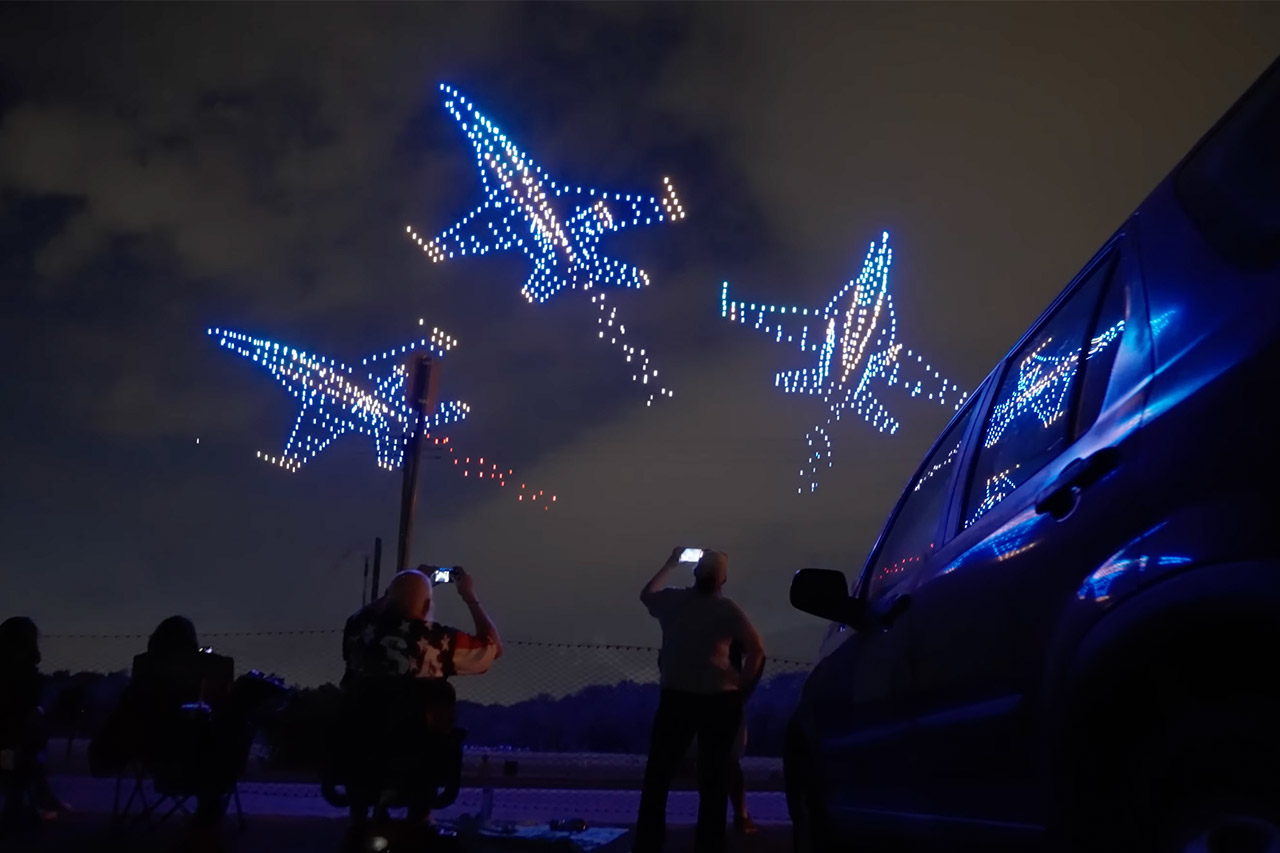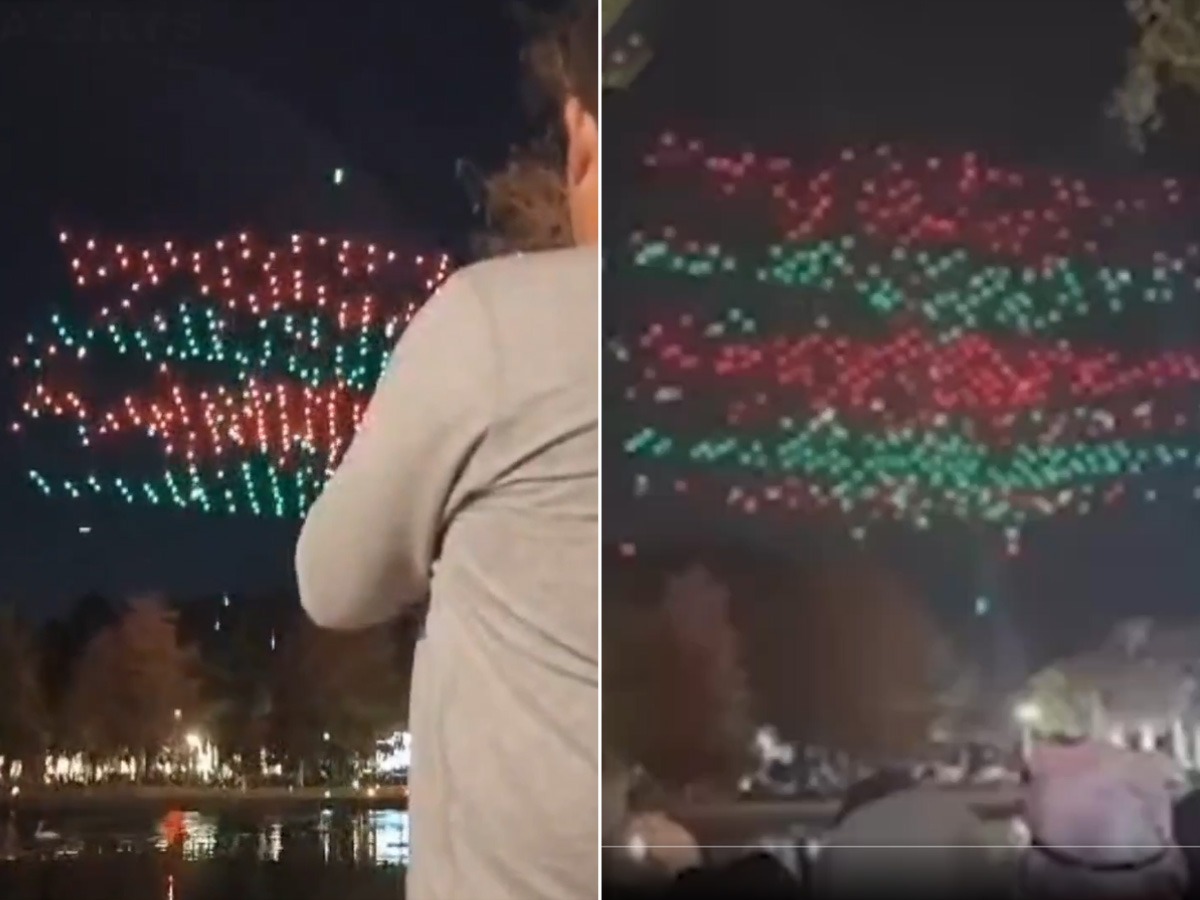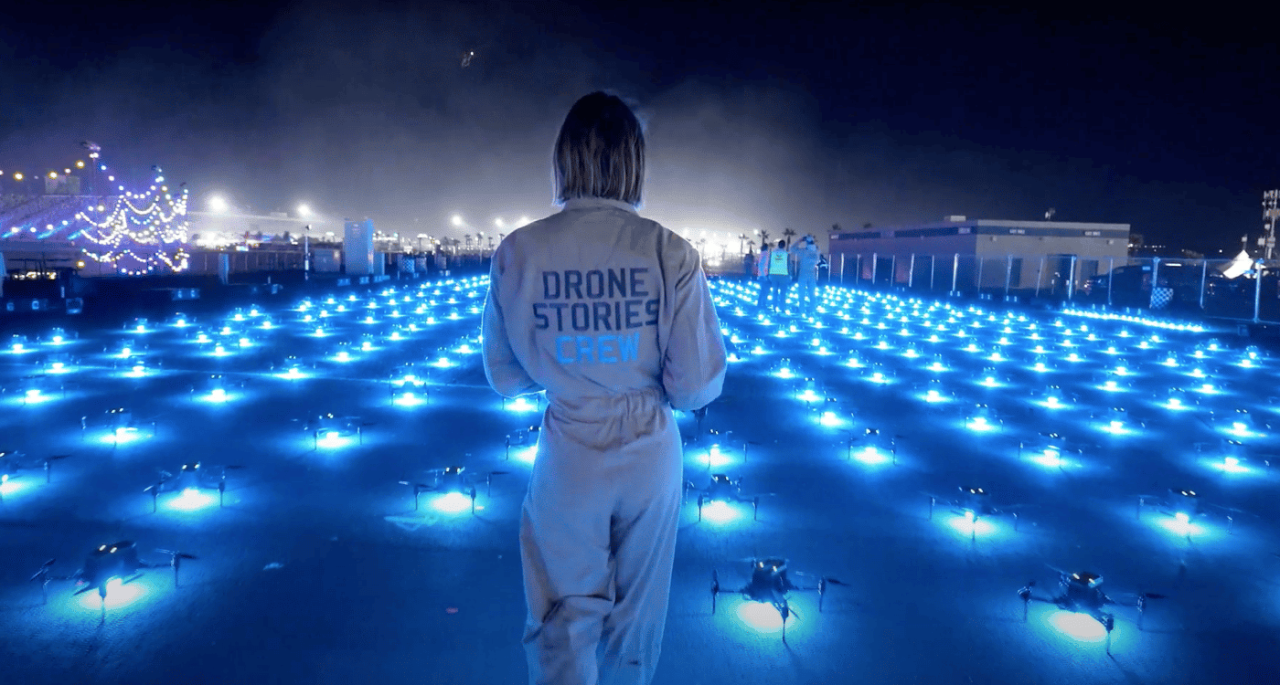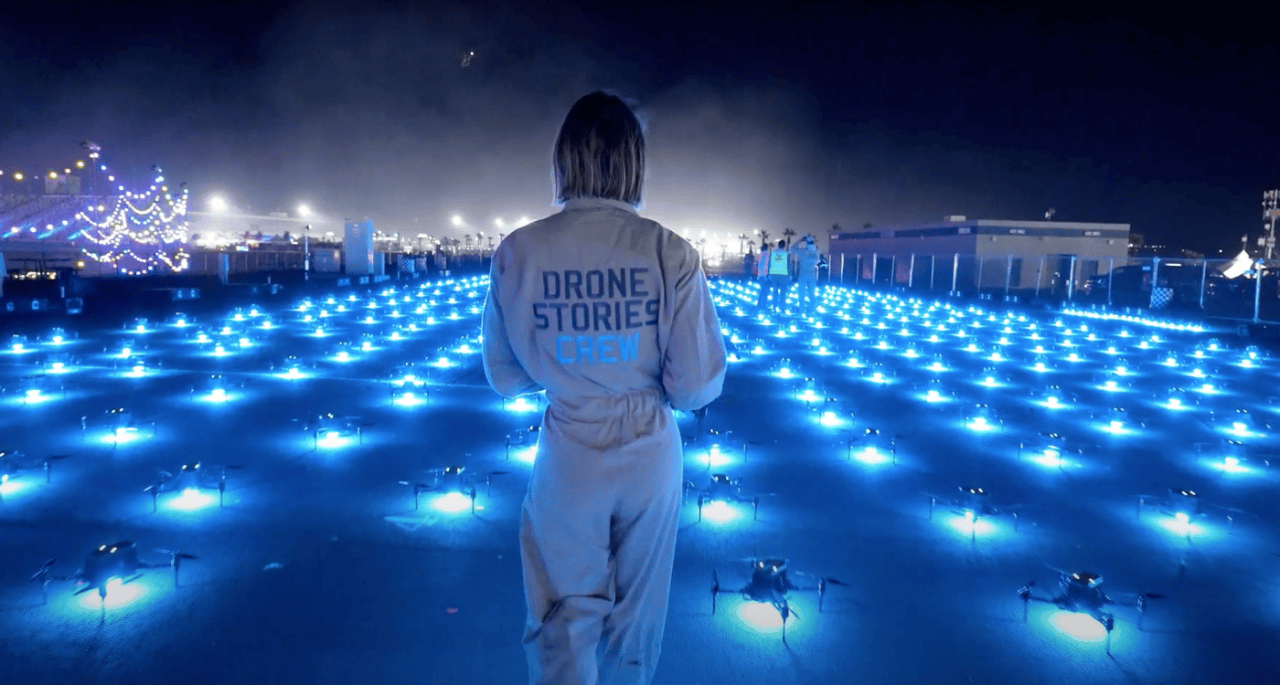Florida Drone Show: Witness breathtaking aerial displays illuminating Florida’s skies. This guide delves into the captivating world of Florida drone shows, exploring everything from the intricacies of obtaining permits and choosing optimal locations to understanding the technological marvels and economic impact of these spectacular events. We’ll examine the various types of shows, the safety regulations, and the exciting future of this rapidly evolving industry.
From dazzling themed spectacles to corporate presentations and public displays, Florida’s drone show scene offers a diverse range of experiences. We will explore the unique challenges and opportunities presented by Florida’s diverse geography and weather patterns, providing insights for both organizers and spectators alike. This comprehensive overview will equip you with a thorough understanding of the planning, execution, and impact of drone shows within the Sunshine State.
Florida Drone Show Regulations and Permits
Navigating the regulatory landscape for drone shows in Florida requires a clear understanding of Federal Aviation Administration (FAA) rules and local permitting processes. This section provides a comprehensive overview of these requirements, aiming to simplify the process for organizers.
FAA Regulations Governing Drone Shows in Florida
Drone shows in Florida, like all drone operations in the US, fall under the jurisdiction of the FAA. Key regulations include Part 107, which Artikels requirements for drone pilots, and specific guidelines for operating multiple drones simultaneously, crucial for coordinated drone displays. These regulations cover aspects such as pilot certification, airspace restrictions, operational limitations based on weather conditions, and maintaining safe distances from bystanders.
Failure to comply with these regulations can result in significant penalties.
Obtaining Necessary Permits for a Florida Drone Show
Securing the necessary permits for a Florida drone show involves a multi-step process. It begins with registering the drone with the FAA and obtaining a Part 107 Remote Pilot Certificate for each pilot involved. Next, organizers must file a Notice to Airmen (NOTAM) with the FAA, providing details about the show’s date, time, location, and planned flight path. This alerts other aircraft to the drone activity.
Finally, securing local permits from the relevant county or municipality is essential. These permits often require liability insurance, site plans, and safety protocols.
Permitting Processes in Different Florida Counties
Permitting processes can vary significantly across Florida’s diverse counties. Some counties may have streamlined processes with dedicated departments handling drone show applications, while others might require navigating multiple departments and approvals. Organizers should contact the specific county’s aviation or special events department well in advance to understand their requirements and timelines. Differences may include specific documentation requirements, fees, and insurance stipulations.
Checklist of Documents Required for Permit Applications
A comprehensive checklist for permit applications is crucial to ensure a smooth and timely process. This should include the completed application form, FAA registration numbers for all drones, Part 107 certificates for all pilots, a detailed flight plan, liability insurance documentation, site maps and diagrams showing the show area and surrounding environment, a safety plan outlining risk mitigation strategies, and any other documentation specified by the county.
Popular Locations for Florida Drone Shows
Florida offers numerous stunning locations ideal for drone shows, balancing spectacular backdrops with accessible airspace and favorable weather conditions. Careful consideration of airspace, visibility, and accessibility is paramount in selecting the perfect venue.
Ideal Locations for Drone Shows in Florida
Five prime locations, each offering unique advantages, are highlighted below. Factors such as minimal air traffic, clear sightlines, and ease of access for both the show organizers and the audience have been considered in their selection.
| Location | Characteristics | Pros | Cons |
|---|---|---|---|
| St. Augustine Beach | Historic setting, ample space, ocean views | Stunning backdrop, tourist attraction | Potential for wind, proximity to airport |
| Clearwater Beach | Wide open beach, clear skies, popular tourist destination | Large audience potential, iconic views | Crowds, potential for beach closures |
| Kennedy Space Center Visitor Complex | Unique historical setting, large open space, controlled airspace | Thematic possibilities, existing infrastructure | Stricter regulations, higher permit costs |
| Everglades National Park (designated areas) | Vast natural landscape, unique environment, relatively unpopulated | Dramatic backdrop, eco-tourism potential | Logistical challenges, environmental considerations |
| Orlando (select locations) | Large open areas, close to major infrastructure, large population | High audience potential, easy access | Airspace complexity, noise regulations |
Geographical Map of Locations
A map illustrating these locations would show their distribution across Florida. St. Augustine Beach and Clearwater Beach are located on the east and west coasts respectively. Kennedy Space Center is on the central east coast. Everglades National Park spans a large area in southern Florida.
Orlando is situated in the central region of the state. Key landmarks, such as major highways and airports, would be included to show proximity and potential airspace considerations.
Types of Drone Shows in Florida

Drone shows in Florida are diverse, ranging from large-scale public spectacles to intimate corporate events. The type of show significantly influences its technological requirements, choreography, and overall impact.
Examples of Drone Show Types
Florida has hosted various drone show types. Themed shows, often celebrating holidays or local events, incorporate story-driven choreography and music synchronization. Corporate events use drone shows for product launches or brand activations, emphasizing precision and visual branding. Public displays, often part of larger festivals or celebrations, prioritize broad audience appeal and visual spectacle.
Unique Aspects of Different Show Types
Themed shows require intricate storytelling through drone formations and lighting effects. Corporate events need precise branding integration, while public displays focus on maximizing visual impact and audience engagement through simple yet captivating routines. Music synchronization and lighting design are integral elements across all types, with complexity varying based on the show’s ambition.
Florida drone shows are becoming increasingly popular, offering spectacular nighttime displays. For those interested in similar events, checking out the impressive displays at the orlando drone show provides a great point of comparison. The innovative choreography and technological advancements showcased in Orlando often influence future Florida drone show productions, ensuring continued growth and innovation within the state.
Technological Requirements for Different Drone Show Types
The technological requirements scale with the complexity of the show. Larger, more intricate displays necessitate a greater number of drones, more advanced software for choreography and control, and robust communication systems to maintain synchronization. Simple shows might use fewer drones and simpler software, reducing overall technical demands.
Scale and Complexity of Different Show Types

The scale and complexity of a drone show directly correlate with its type. Large-scale public displays might involve hundreds of drones performing intricate synchronized maneuvers, while smaller corporate events may utilize a more modest number of drones for simpler, targeted displays. The choreography, lighting, and music also become more complex as the scale increases.
Technological Aspects of Florida Drone Shows
The technology behind a successful Florida drone show is a complex interplay of hardware, software, and operational expertise. Understanding these aspects is crucial for planning and execution.
Types of Drones Used and Their Capabilities
A range of drones is employed, from smaller, lighter models ideal for intricate formations to larger, more robust drones capable of carrying heavier payloads for enhanced lighting effects. Key capabilities include precise GPS positioning, reliable communication systems, and advanced flight control algorithms for autonomous operation and coordinated movements. The choice of drone depends on the scale and complexity of the show.
Software and Hardware Involved in Planning and Execution
Sophisticated software packages are used to design and program the drone choreography. These programs allow for the creation of intricate flight paths, synchronization of movements, and integration of lighting and music. The hardware includes ground control stations, communication systems for drone control, and power sources for charging and operating the drones. Robust backup systems are essential for redundancy.
Challenges of Using Drones in Florida’s Diverse Weather Conditions
Florida’s variable weather, including high humidity, rain, and strong winds, presents challenges. Wind speeds exceeding safe operational limits can disrupt the show, while rain can affect drone electronics. Organizers must implement contingency plans, including weather monitoring and alternative show dates, to mitigate these risks. Real-time weather data integration into the show’s control system can aid in dynamic adjustments.
Flow Chart Illustrating Programming Steps
A flow chart would visually represent the process: Begin with show design and choreography creation using specialized software. Next, the programmed sequence is uploaded to the drones. Pre-flight checks are performed, including battery levels, communication systems, and weather conditions. The show is initiated and monitored via ground control stations. In case of any issues, emergency protocols are followed.
Florida drone shows are becoming increasingly popular, offering spectacular nighttime displays. Many companies are contributing to this trend, including innovative drone technology providers like sky elements drones , whose advanced systems often power these breathtaking performances. The intricate choreography and vibrant visuals seen in these Florida shows highlight the remarkable capabilities of modern drone technology.
The show concludes with post-flight data analysis and drone recovery.
Economic Impact of Drone Shows in Florida
Drone shows are increasingly recognized for their economic contribution to Florida, stimulating tourism, creating jobs, and boosting local businesses.
Economic Benefits of Drone Shows, Florida drone show
Data on the direct economic impact is still emerging, but anecdotal evidence suggests significant contributions. Shows attract tourists, boosting hotel occupancy and spending in local businesses. They also create jobs in areas such as drone piloting, software development, event management, and related support services. The overall economic multiplier effect is likely substantial, especially in areas hosting major drone shows.
Impact on Local Businesses and Communities

Drone shows can revitalize local economies by increasing foot traffic and spending in surrounding businesses. Restaurants, hotels, and retail shops often experience a surge in revenue during and around show events. This positive economic spillover effect strengthens the local community and creates a sense of civic pride.
Potential for Future Growth
The Florida drone show industry shows considerable potential for future growth. As technology advances and regulations become more streamlined, the cost of producing drone shows will decrease, making them more accessible to a wider range of organizers. Increased public awareness and acceptance will further fuel demand, leading to a more vibrant and economically significant industry.
Table Showing Revenue Generation, Job Creation, and Tourism Impact
| Metric | Example Show (Illustrative Data) | Projected Growth (5 years) | Factors Influencing Growth |
|---|---|---|---|
| Revenue Generated (USD) | $500,000 (estimate) | $1,000,000+ | Increased tourism, higher ticket prices |
| Jobs Created | 50 (estimate) | 100+ | Industry expansion, new technologies |
| Tourism Impact (Visitor Nights) | 5,000 (estimate) | 10,000+ | Marketing efforts, increased event frequency |
Safety and Security Considerations for Florida Drone Shows
Prioritizing safety and security is paramount for successful and responsible drone shows. This section Artikels essential protocols and measures to ensure the well-being of both participants and spectators.
Safety Protocols During a Florida Drone Show
Comprehensive safety protocols are essential. These include thorough pre-flight inspections of all drones, ensuring all pilots hold valid Part 107 certificates, maintaining constant communication between pilots and ground control, having a designated emergency response plan, and establishing clear communication channels with local authorities. Regular safety briefings for all personnel involved are crucial.
Measures to Ensure Drone and Audience Security
Security measures include establishing a secure perimeter around the show area, restricting unauthorized access, using appropriate lighting to enhance visibility, and having trained personnel on standby to address any unexpected situations. Redundancy in drone control systems and backup power sources further enhances safety. Emergency landing zones should be designated in case of unexpected events.
Potential Risks and Mitigation Strategies
Potential risks include drone malfunctions, adverse weather conditions, and unauthorized drone interference. Mitigation strategies involve using redundant systems, implementing robust weather monitoring, and coordinating with local air traffic control to avoid conflicts. Thorough risk assessments should be conducted before each show, and appropriate insurance coverage secured.
Safety Guidelines for Drone Show Organizers and Attendees
- Obtain all necessary permits and licenses.
- Conduct thorough pre-flight checks.
- Maintain a safe distance from the drones.
- Follow all instructions from show personnel.
- Be aware of potential hazards, such as wind and obstacles.
- Have a clear emergency plan in place.
- Report any incidents or concerns immediately.
Florida drone shows represent a dynamic intersection of technology, entertainment, and economic development. As this industry continues to evolve, its potential for growth and innovation within Florida remains immense. By understanding the regulations, safety protocols, and technological advancements discussed in this guide, we can appreciate the artistry and impact of these captivating aerial displays and look forward to a future filled with even more spectacular shows.
Commonly Asked Questions
What is the average cost of a Florida drone show?
The cost varies greatly depending on the scale, duration, complexity, and number of drones involved. Expect significant variations based on these factors.
How long does it take to obtain a permit for a drone show in Florida?
Processing times differ across counties, but expect several weeks to several months, depending on the complexity of the application and the responsiveness of local authorities.
Are there any restrictions on the types of drones allowed in Florida drone shows?
Florida’s drone shows are becoming increasingly popular, offering spectacular nighttime displays. For a different kind of holiday tracking, you might consider checking the norad santa tracker phone number for updates on Santa’s journey. However, if you prefer a dazzling light show closer to home, Florida’s vibrant drone performances provide an equally captivating experience.
Yes, FAA regulations specify drone types and capabilities allowed. Organizers must ensure compliance with all applicable rules and regulations.
What happens if bad weather threatens a Florida drone show?
Organizers typically have contingency plans, including postponements or cancellations depending on severity and safety concerns. Detailed weather monitoring is crucial.
